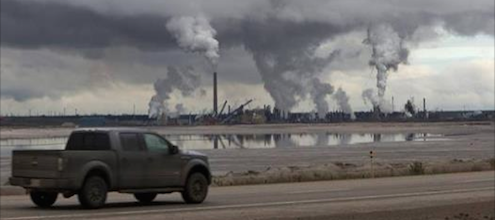
Smooth transition needed for carbon pricing and free trade
Even if we weren’t in the middle of a federal election campaign, there would be several important policy issues being discussed this summer. One of the big ones is Canada’s part in the negotiations for the Trans-Pacific Partnership, a free-trade agreement with several Pacific Rim countries. Another is the development of carbon-pricing policies in Ontario and Alberta. Policy makers and ordinary Canadians alike should note that these policies have two big things in common, and one crucial difference.
Both free trade and carbon pricing are undertaken in the pursuit of a major, long-run prize. In the case of free trade, the prize is that our consumers get access to a wider range of products, often with higher qualities and lower prices. Canadian firms use many of those imported products as inputs, and in these cases both the domestic businesses and their consumers benefit. At the same time, free trade gives Canadian firms access to larger foreign markets in which to sell their products. The increased scale of production generally improves productivity and, eventually, the wages earned by Canadian workers.
In the case of carbon pricing, the long-run prize is an economy with greater energy efficiency and lower emissions of greenhouse gases, which contributes to existing global efforts to reduce the costs of ongoing climate change. By raising the prices of emissions-intensive activities, carbon pricing will also drive important innovations and the expansion of a clean-tech sector, one that will see increasing business opportunities as the world economy gradually evolves away from fossil fuels.
The second thing in common between free trade and carbon pricing is negative. Both policies create some important transitional costs, which policy makers need to acknowledge and address. In the case of free trade, the reduction of tariffs or import quotas implies a reduction in the level of protection previously afforded to specific firms and workers. Some profits will decline, some firms will shrink and some workers will lose their jobs. But for the most part, this labour, managerial skill and financial capital will relocate to those parts of the economy benefiting and expanding as a result of freer trade.
In the case of carbon pricing, the whole point of the policy is to drive a long-term transition away from carbon-intensive activities and toward less-emitting ones. But this transition will not be painless. Like the response to freer trade, the adjustment will see some industries scale back their production and some workers lose their jobs. But the displaced capital and labour will eventually be absorbed in the expanding, lower-carbon parts of the economy.
In both cases, these transitions will be painful for the firms and workers involved, and in some cases they may last a while. Policy makers need to take these costs seriously and design temporary measures to ease the adjustment. In fact, one could easily argue that precisely these kinds of transitional support policies are essential if freer trade and carbon pricing are to win broad acceptability with voters. In both cases, Canadians are likely to agree the pursuit of the long-run prize is worthwhile – but only if the transition to that better world is made reasonable for those most affected.
The one big difference between free trade and carbon pricing relates to the direct impact on governments’ fiscal positions. The decline of tariffs and quotas will directly reduce government revenues, but these days the effect will be quite small. In contrast, carbon pricing will typically generate new revenues for whichever government is implementing the policy. For example, British Columbia’s carbon tax currently raises about $1.2-billion a year.
These carbon-pricing revenues offer governments some much-needed flexibility in dealing with their many economic and fiscal challenges. The revenues can be used to reduce existing income taxes, finance critical infrastructure, assist low-income families, or support key social programs. Or the carbon-pricing revenues can be used to deal directly with the policy’s transitional costs – by assisting those firms adjusting to lower-carbon activities or by providing support to those workers needing to improve their skills as they relocate to lower-carbon industries.
Free trade and carbon pricing both offer long-run prizes for Canadians, but the paths to those prizes have some important bumps along the way. Unlike free trade, carbon pricing generates revenues that can help governments smooth out those bumps. So if Canadians can find themselves embracing freer trade, the adoption of carbon pricing might prove to be even easier.
This piece was originally published by the Globe and Mail on August 11, 2015.




Comments are closed.